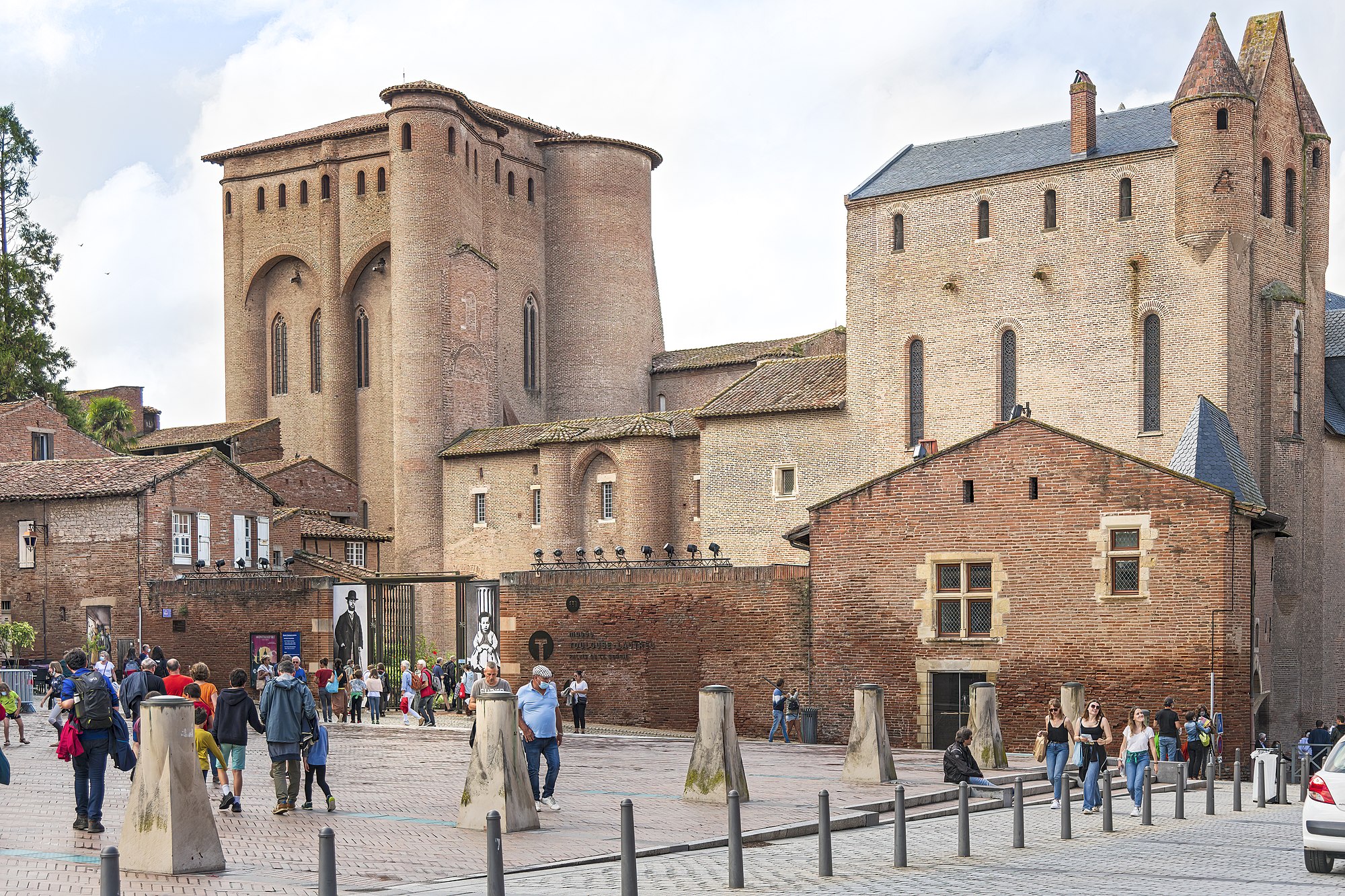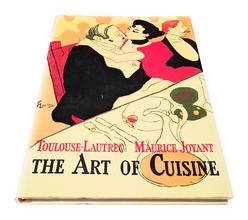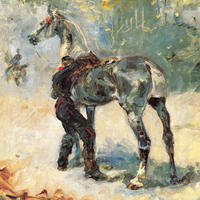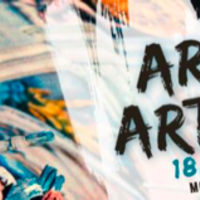More about Toulouse-Lautrec Museum
- All
- Info
- Shop
Works at Toulouse-Lautrec Museum

Sr. Contributor
An 800-year old UNESCO World Heritage Site with more Lautrec paintings than anywhere else on the planet.
As it should, considering Lautrec was born just a few blocks away from the building that became the museum. There's over 1000 Lautrec pieces in all, a ton of which were donated to the French state in 1922 by Henri's parents, the Count and Countess de Toulouse-Lautrec. The government had just seized the Palais de la Berbie from the Catholic church a few years prior and figured it was as good a place as any to house Lautrec's life's work.
The Palais de la Berbie was a power grab by the local Catholic bishops in the late 13th century. The viscounts of Albi had all gone off to fight Pope Innocent III's Albigensian crusade to kick the growing Cathar cult out of southern France. While the Cathars were largely defeated, the viscounts of Albi didn't do so well. The family was so decimated that power-hungry clergy within the area made their move and got all handsy on the area's taxation laws.
Rigging the local tax game in the Church's favor let the dough roll in so much that the townsfolk got real pissed off, real quick. The bishops around Albi built a palace to protect themselves from the common folk. Doing major renovations throughout the centuries to make the place impregnable. After the French Revolution, the First Republic and the First Empire tried to set up Berbie as a natural history, art, and antiquities museum. All three categories were weak, but none more so than art. When Toulouse-Lautrec's friends and parents donated a bunch of his work to the state in the early 20th century, the government knew just which recently-repossessed building to turn into Lautrec central.

Contributor
Three reasons to love the Museum Toulouse-Lautrec in Albi, France:
- The Medieval town of Albi – a UNESCO World Heritage Site and the place from which all powerful Bishops in Southern France ran the show for centuries. It has the most ominous, fortress-like Cathedral known to man, built right after king and church killed tens of thousands of "heretics" known as the Cathars. But each bishop has tried to leave his mark on the inside of the Cathedral and after a few centuries of this, the place is decoration madness. Every wall, nook and cranny, and bit of the arched ceiling is covered in many splendid things: bright blue renaissance frescos, marble and limestone saints, carved (fake) walls, and of course an immense painting of heaven and hell. Albi is an ancient town and famous for its hand-made red brick.
- Duck casserole like you've never tried before. Each town in southern France has its own take on casserole and Albi's is a splendid thing.
- And, the Henri de Toulouse-Lautrec shrine in the Museum's Palais de la Berbie. The Palace is another fortress with fabulously high walls. It is all of 15 seconds from the Cathedral so the bishops can scurry from one to the other without exposing themselves to the riff raff. The Museum has a huge collection of paintings, sketches, and posters by the young and the somewhat older Henri (he died in his thirties). It's splendid. Several hundred fickle reviewers on Trip Advisor give the museum 4 ½ out of 5 stars.
Featured Content
Here is what Wikipedia says about Musée Toulouse-Lautrec

The Musée Toulouse-Lautrec is an art museum in Albi, southern France, dedicated mainly to the work of the painter Henri de Toulouse-Lautrec who was born in Albi. The 13th-century building was originally the palace of the bishop of Albi Cathedral, which is next to the museum. Both are part of a UNESCO World Heritage Site.
Check out the full Wikipedia article about Musée Toulouse-Lautrec















